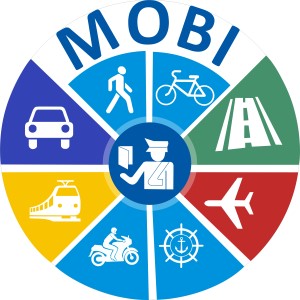On November 26, 2020, the kick-off meeting of the partners of the “Modern border infrastructure – successful Carpathian region” (MOBI) project took place. The project is which is implemented with the financial support of the ENI CBC Programme Hungary-Slovakia-Romania-Ukraine 2014-2020.
Information about the project: The project “Modern Border Infrastructure – Successful Carpathian Region” (MOBI) is implemented since March 1, 2020, by an international consortium, which includes regional governments and professional institutions, namely: International Association of Regional Development Institutions IARDI (Ukraine), Self-Government of Szabolcs-Szatmár-Bereg region (Hungary), Košice self-government region (Slovakia), Maramureș County Council (Romania), Territorial Administrative Unit of Satu Mare County (Romania), Road Service in Zakarpattia oblast (Ukraine).
The aim of the project is to create a sustainable platform for effective cross-border mobility of people and goods by improving transport and border infrastructure, strengthening cooperation between governments and professional organisations the activities of which affect the development of transport in the border regions of Ukraine, Hungary, Slovakia and Romania. The project envisages the development of a joint Mobility Plan, which will synchronise the regional plans of each border region in the field of transport and border infrastructure, development of international transport corridors, railway traffic, international aviation, etc.
The kick-off meeting took place by combining the meeting of Ukrainian partners and experts in the conference hall and the video-conference connection from Hungary, Slovakia, Romania and Ukraine. The meeting was attended by the representatives of all partner organisations of the MOBI project, namely: representatives of the Self-government of the Szabolcs-Szatmár-Bereg region (Hungary), Košice self-government region (Slovakia), Maramureș County Council (Romania), Territorial Administrative Unit of Satu Mare County (Romania), Road service in Zakarpattia oblast (Ukraine) and International Association of Regional Development Institutions IARDI (Ukraine).

At the beginning of the event, the project coordinator and head of the International Association of Regional Development Institutions IARDI Nataliya Nosa presented the main objectives and activities of the project.
An important goal of the meeting was the presentation of the heads of relevant departments of border regions and experts on modern approaches to strategic planning for the development of transport and border infrastructure, namely:
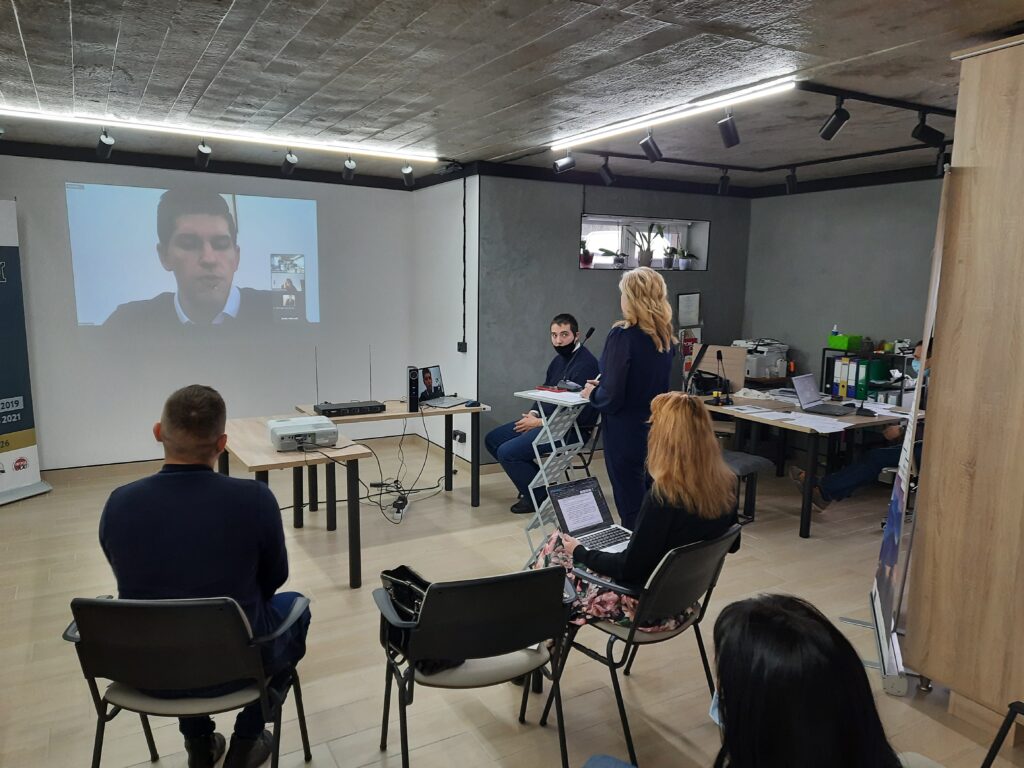
– In his speech, Gábor Zimborán, representative of Self-government of Szabolcs-Szatmár-Bereg County (Hungary), emphasized the main tasks of strategic planning at the project level: increasing the accessibility of the regions through continuous improvement of the transport infrastructure network. It was emphasized that the peculiarity and main challenge of the 4 border regions is the weak, unsatisfactory state of transport infrastructure, especially in the context of its development, planning and maintenance. Therefore, to increase the mobility of people and goods, a necessary factor is the supply of high-quality highways to border crossings. This aspect necessitates the creation and improvement of cross-border cooperation through the development and implementation of mobility plans and joint action plans, as the development of the above documents will provide a basic concept for future projects. Along with that, the Joint Mobility Plan will lay the groundwork for a number of successful projects in the field of cross-border cooperation. Particular attention should be paid to strategic planning. The main conceptual document for the Szabolcs-Szatmár-Bereg region is the Integrated Regional Development Strategy for 2021-2027 which integrated the goals and objectives of the 2014-2020 strategy. The Hungarian stakeholders include the Hungarian Public Roads Private Limited Company, the Hungarian State Railways Private Limited Company and the Northern Hungary Transport Center Private Limited Company.

– Claudia Breban, representative of Maramureș County Council (Romania), outlined the need to develop a joint CBC Mobility Plan for all regions at the project level, especially in the context of transport infrastructure. The primary purpose of this document is to create and implement modern approaches to improving the accessibility of all means of transport (private and public) based on qualitative expert analysis. At the strategic level, it is essential to plan and implement activities following the requirements of the strategic documents, as well as to integrate all project objectives into the joint CBC Mobility Plan in all regions.

– Stern Felicia Cristina, representative of Territorial Administrative Unit of Satu Mare County (Romania), noted that the 4 partner regions of the project have much in common not only at the regional level. At the national level, proposals are being prepared for the cross-border cooperation program for the next programming period. Satu Mare County will develop a strategy to integrate the CBC Mobility Plan developed within the project. Of course, there are some difficulties, as not all regions have already developed and approved regional mobility plans. Still the main task is to meet the needs of local communities in the transport sector, as all citizens must have access to new, improved, environmentally friendly and affordable transport with high service quality.

– Matej Ovčiarka, Head of the Department of Regional Development and Spatial Planning of Košice self-governing region (Slovakia), highlighted new approaches to strategic planning in the field of transport and border infrastructure development and noted that the transition to the new operational program 2021-2027 is underway. Košice self-governing region has already prepared a regional Mobility Plan, which has been adapted and approved by the Council of the Košice self-governing region, and has undergone a strategic evaluation process. Cross-border cooperation is crucial, and its integral part is transport infrastructure. The “MOBI” project allows to develop a feasibility study for important sectors, namely: the construction of the Michalovce-Vyšné Nemecké cycle path, as well as the Maťovce-Vojtkovce (Slovakia) checkpoint: road 3552 (Ukraine).
– Mykhailo Mokhnia, Deputy Head of the Road service in Zakarpattia oblast (Ukraine) focused on the infrastructure component. According to the activity group of the project 4.1, preparatory works are being carried out, contracts with subcontractors have already been concluded. Road service in Zakarpattia oblast (Ukraine) is reconstructing a cycle path on the Tiszabökény-Tiszapéterfalva (Ukraine) road leading to and from the Tiszabecs (Hungary) – Vylok (Ukraine) border checkpoint in the direction of the Kispalád (Hungary) – Velyka Palad’ (Ukraine) border checkpoint. Part of the road section from the village of Vylok to the village of Tiszabökény has already been reconstructed, the task within the project is the reconstruction and arrangement of a part of the bicycle path with a total length of 4,350 km. Special attention of the Road Service in the Zakarpattia region is also paid to the development of feasibility studies for 2 locations in the border area, which will be developed jointly with expert groups on the other side of the border.
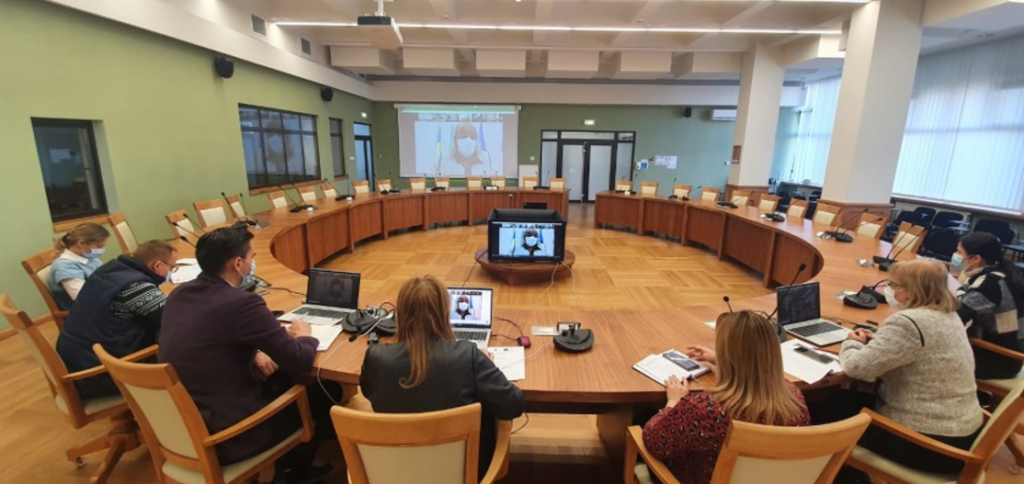
– Michaela Liţe, the representative of Maramureș County Council (Romania), presented a draft of the CBC Mobility Plan Structure developed by Romanian experts, which contains sections with primary research and foreseen areas of border infrastructure development, including the construction of existing and the creation of foreseen checkpoints, development of transport infrastructure, including international transport corridors and bicycle connections, railway connections, air connections, as well as the study of the possibility of water connections in the area of the Upper Tisza. Mihaela Lite stressed that all partner regions of the project are members of the Carpathian Euroregion, which covers a vast border area with everyday challenges and features of development. Therefore essential tasks are to increase the accessibility of sites, based on the development of a joint cross-border mobility plan needed to increase the mobility of people and goods.
During further discussions and thematic speeches, international experts from Ukraine and border regions outlined the main problems and identified pilot projects as fields for economic growth in the area of border and transport infrastructure, namely:
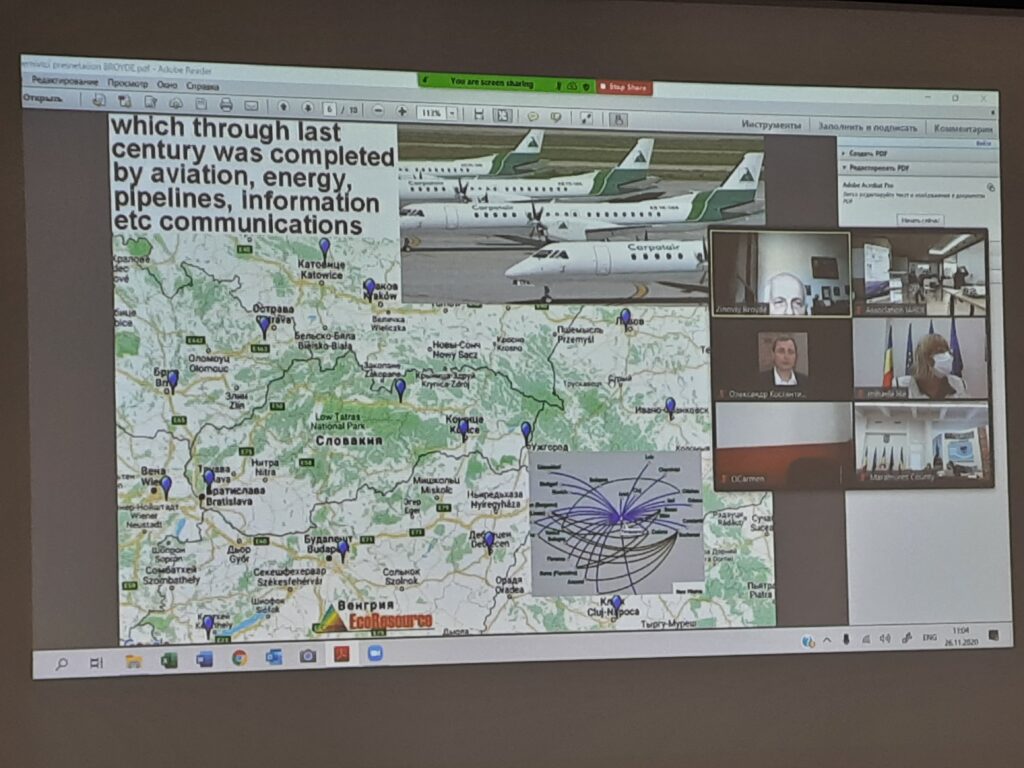
– Expert Zinovij Broyde (Chernivtsi region, Ukraine) in his presentation highlighted the need to restore the railway line Odessa-Zhmerynka-Chernivtsi-Kolomyia-Rakhiv with the reconstruction of the European standard track on the section Dilove-Rakhiv (Ukraine) – Valea Vișeului (Romania) and Teresva (Ukraine) – Câmpulung la Tisa (Romania). Zinovij Broyde claimed that this railway route is a basic infrastructure component for the entire Carpathian region, as it is based on the connection (road, air, etc.). This idea has already received support at the regional and governmental levels in Ukraine, and is an integral part of the strategy of the Carpathian region.
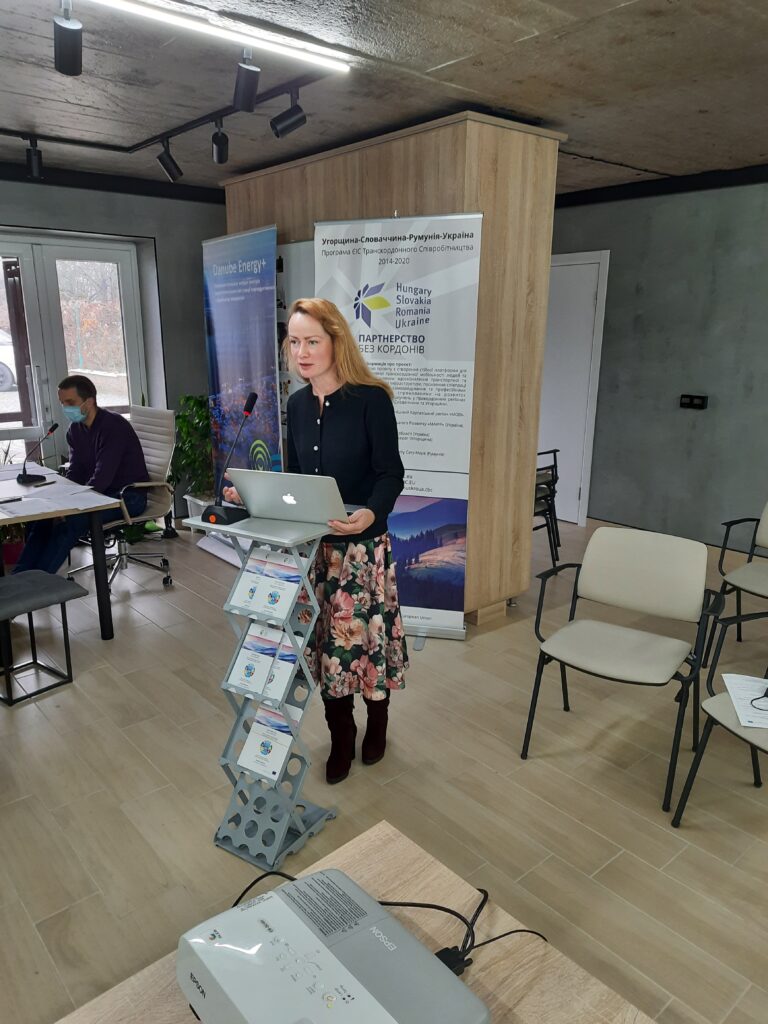
– From the speech of Ludmila Kozlovska, an expert on border infrastructure, the participants of the kick-off meeting learned about the main aspects of legal requirements at the national and regional levels for the development of cross-border development plans. There are many pieces of legislation governing public infrastructure policy at the regional level. In accordance with the decentralisation reforms, in 2015 the Decree of the President of Ukraine approved the concept of sustainable development until 2030. The Strategy defines the general vector of sustainable development of the regions and is developed in accordance with the Sustainable Development Goals of Ukraine until 2030, approved by the Decree of the President of Ukraine of September 30, 2019 № 722. According to the resolution of the Cabinet of Ministers of Ukraine the state strategy of regional development for 2021-2027 aiming to deepen economic, socio-cultural integration at the state and regional levels was approved. This document forms the basis according to which new approaches to state regional policy have been formed by 2020.
Currently, there are two fundamental differences: if until 2020 the main donor of infrastructure projects was public funding, then the Strategy 2021-2027 redirects public investment in tangible and intangible assets in the form of “soft” and “hard” projects. This will be done with an expert assessment of their content and potential. Another feature is the fact that until 2020, the development of regional development strategies were the central government, and now the development of the strategy will take place at the central, regional and local levels with the involvement of non-governmental organisations.
To date, the state targeted programmes for the development of the state border have been completed, and the concept of the State target program of development of the state border by 2030 and target and action plan for building checkpoints are being considered by ministries and departments. This opens a window of opportunity for proposals in these programmes and development plans during the project implementation. At the regional level, there is a programme for the development of border infrastructure in the Zakarpattia region until 2022.

– From the presentation of Györgyné Makszim Dr. Tímea Nagy, an expert on regional planning and development of transport infrastructure in Szabolcs-Szatmár-Bereg region, the participants of the kick-off meeting gained new knowledge about the main features of regional development disparities in Hungary which were formed and intensified after Hungary’s transition to democracy in 1989. The conditional division of the country into “West-East”, “Budapest – the whole country”, “Center – province” complicates regional development, but it made it possible to develop a concept of analysis and development of proposals for the formation of the Mobility Plan. Thus, Tímea Nagy proposes to single out economic and social groups of factors influencing the development of the region. The next step is to determine how the system of relationships between regional actors works. The final stage is to determine the factors of supply and demand on the basis of the above categories.
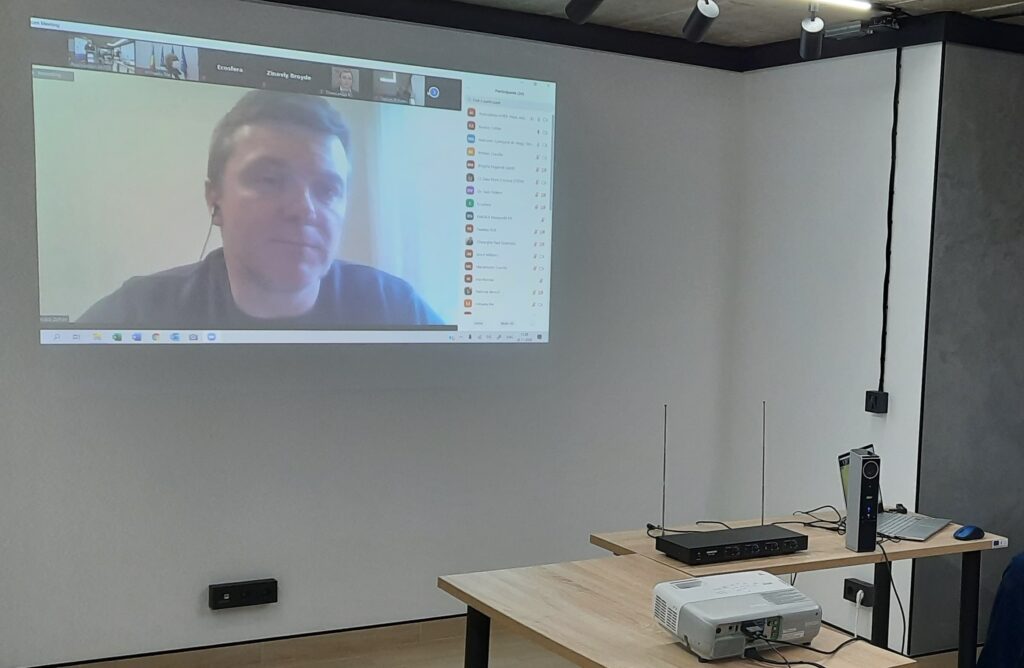
– Dr. Zoltán Kovács, Transport Infrastructure Expert of the Self-government of Szabolcs-Szatmár-Bereg, identified key aspects that will undoubtedly be included in the Joint Project Mobility Plan. Thus, one of the priorities of the Hungarian government is the development and reconstruction of infrastructure, which, in turn, ensures the competitiveness of the economic system of the state and increases the mobility of citizens in general. The goal of the infrastructure development and improvement programme of the government of Hungary is to be able to reach any section of the motorway from the local road in 30 minutes. In this context, it is planned to bring the motorways to the national borders of Hungary and to continue to develop their network on a radial basis. In addition, it is planned to build two bridges across the Danube by Komárom (Hungary) – Komárno (Slovakia), as well as the preparation and construction of two other bridges across the Danube, one of which near Mohács, and the second, the so-called Galvani Bridge in Budapest to connect the Kelenföld and Ferencváros districts; the bridge across the Tisza river in the town of Szolnok for the M4 motorway, the bridge across the Tisza river between the village of Lónya and the village of Tiszamagyaros (Szabolcs-Szatmár-Bereg), the reconstruction of the bridge across the Tisza river in the village of Kisköre. In addition, bypass roads are planned in Gyöngyös, Hódmezővásárhely, Kisvárda, Nagykanizsa, Nyíregyháza, Sopron, Székesfehérvár and Várpalota. As a result, all cities of regional importance should have direct access to the highway.

– Ionuţ Militaru, representative of the Territorial Administrative Unit of Satu Mare County (Romania), presented the Approaches to Strategic Planning in Romania, defined the concept of strategic planning and highlighted the main challenges and approaches to their solution. Thus, Satu Mare Mobility Plan covers 854 km of roads and only 75% have asphalt, of which 279 km lead to border crossings, 200 km of railways, and 1 airport (Satu Mare) from which flights depart to London. According to the Romanian expert, the development of a sustainable platform for the development of transport infrastructure in the context of the project “Modern Border Infrastructure – Successful Carpathian Region” (MOBI) should begin with basic research, collection and analysis of local and regional data to help most effectively identify transport means, people and goods through border crossings.

– Miroslav Fazekaš, Integrated Transport Officer, Representative of the Infrastructure Department of the Košice self-governing region (Slovakia) acquainted the audience with the main requirements of Slovakia to the regional programmes for the development of transport infrastructure and the development of public transport networks. It is necessary to take into account the fact that railway transport is under the competence of the Ministry of Transport and Construction of the Slovak Republic, urban transport belongs to the competence of city councils and executive bodies, and long-distance communication is under the competence of self-governing regions. In Eastern Slovakia, long-distance flights are operated by two operators: Arriva and Eurobus. In addition, a logistics company has been set up to organise and operate passenger bus services in Eastern Slovakia. The mobility plan for the Košice self-governing region covers 2,379 km of roads, 573 km of railways and 1 airport (Košice). The development of the Mobility Plan for the Košice self-governing region was completed in the summer of 2020, and the document itself focuses on the strategic planning of transport infrastructure and includes all modes of transport: motorised, individual, public and bicycle.

– Oksana Stankiewicz-Volosianchuk, environmental expert, described the rules and requirements for environmental protection that should be followed when developing Mobility Plans and other strategic documents. From her speech, the participants of the kick-off meeting learned about the peculiarities of the European Union’s implementation of the European Green Course and the European Green Deal. This course envisages a complete restructuring of the economy and reduction of CO2 emissions by 90%, which, in turn, creates a number of challenges and opportunities for Ukraine, including opportunities to significantly strengthen the electric vehicle market and build the appropriate infrastructure. Another important aspect to consider when developing Infrastructure Mobility Plans is the biodiversity component: new transport routes should not pass through protected areas, and where such a phenomenon occurs, eco-docks and aqueducts should be built.
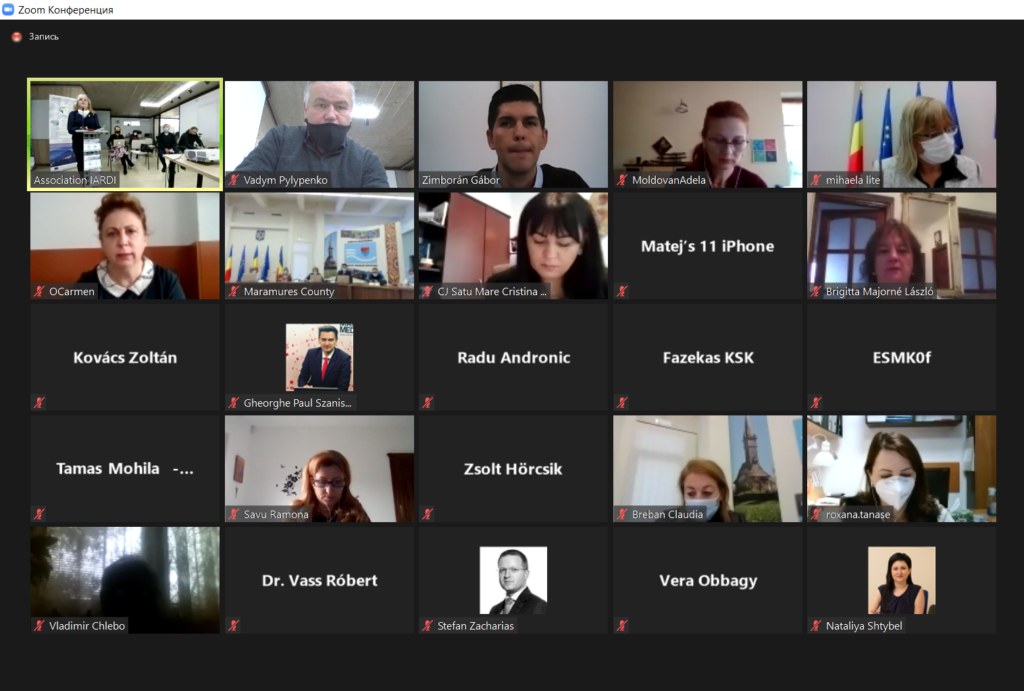
– Vadym Pylypenko, Director of the International Association of Regional Development Institutions “IARDI” (Ukraine), project communication manager, presented the Communication Plan and Website of the project “Modern Border Infrastructure – Successful Carpathian Region” (MOBI). The main tool for communication and exchange of information by international experts and interested organizations is the Website of the project “MOBI” designed to post information in the languages of all target regions (project partner countries). In accordance with the project objectives, the website will play the role of the main communication platform with the public parties.
At the end of the meeting, the project partners summed up and noted that the development of a joint Mobility Plan is strategically important for the further development of the regions, given the new challenges associated with quarantine restrictions for the movement of people and goods that require new joint solutions and new approaches to strategic planning. The construction of new highways, railways and air services, as well as the prospects of water transport are gaining additional importance. Regarding the proposals for the restoration of cross-border rail services through the border regions of the EUSDR countries, can be initiated by the regions of Ukraine and Romania, it is advisable to provide their support to all interested regions and countries to accelerate the implementation of their international feasibility studies and strategic environmental assessment for their implementation under the new EU programs and the European Green Agreement.
The experts identified the following steps in accordance with the Project Implementation Plan: by December 31, 2020, proposals for the draft Structure of the Joint Mobility Plan are expected, which is posted on the project’s web resources and partner resources.
From January 2021, thematic meetings of international experts and round tables with stakeholders are expected to discuss potential growth locations and the results of basic research in the following areas: railway transport, aviation connection, border infrastructure, waterways connections, cycling, international touristic connections.
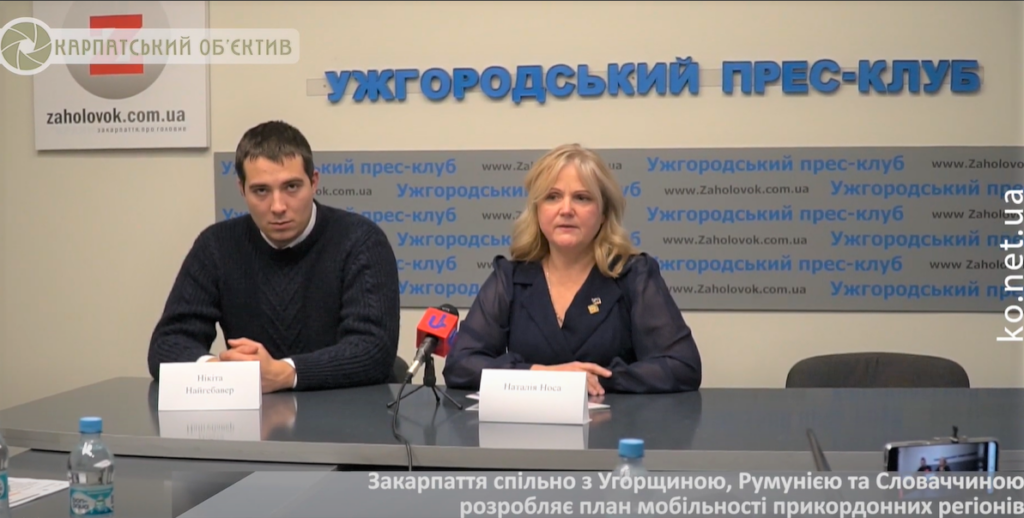
According to results of the Kick-off meeting, the Press-Conference in Uzhhorod Press Club was held. MEDIA representatives were informed about the start of the “MOBI” – Modern Border Infrastructure – Successful Carpathian Region” project, main objectives, activities, and expected results.
Press-Center of the International Association “IARDI”
